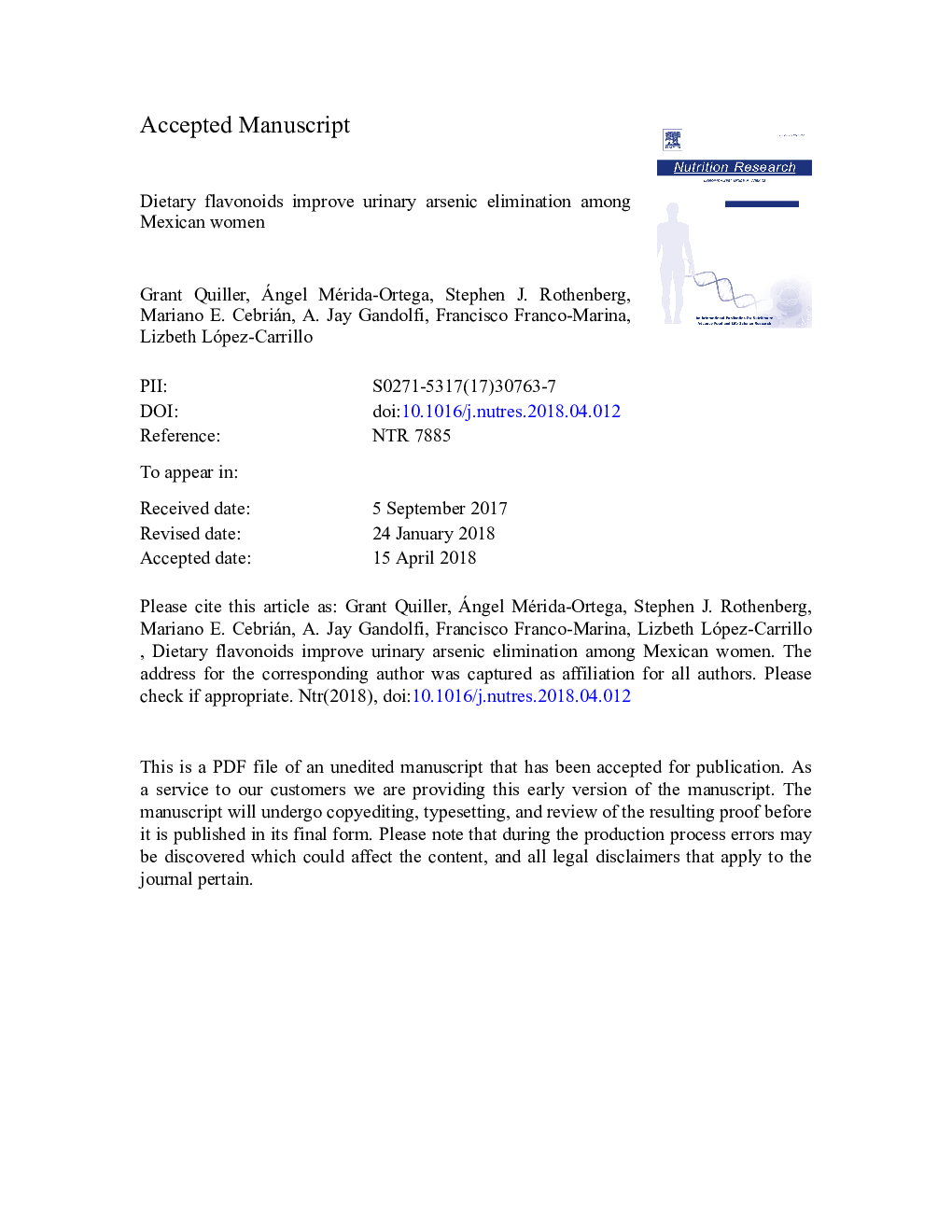| Article ID | Journal | Published Year | Pages | File Type |
|---|---|---|---|---|
| 8634083 | Nutrition Research | 2018 | 23 Pages |
Abstract
Inorganic arsenic (iAs) exposure increases risk of several diseases, including cancer. Some nutrients such as flavonoids enhance glutathione activity, which in turn play a key role in iAs elimination. Our objective was to explore whether dietary non-soy flavonoids are associated with iAs metabolism. We hypothesized that the intake of flavonoids belonging to the following groups, flavan-3-ols, flavone, flavonol, flavanone, and anthocyanidin, is positively associated with urinary dimethylarsinic acid (DMA), which is the most soluble iAs metabolite excreted. We performed a cross-sectional study that included 1027 women living in an arsenic-contaminated area of northern Mexico. Flavonoid intake was estimated using a validated food frequency questionnaire. Concentration of urinary iAs and its metabolites (monomethylarsonic acid and DMA) were determined by high performance liquid chromatography ICP-MS. Results showed positive significant associations between DMA and the flavonoid groups flava-3-ols (β= 0.0112) and flavones (β= 0.0144), as well as the individual intake of apigenin (β= 0.0115), luteolin (β= 0.0138), and eriodictyol (β= 0.0026). Our findings suggest that certain non-soy flavonoids may improve iAs elimination; however, there is still very limited information available regarding the consumption of flavonoids and iAs metabolism.
Keywords
Related Topics
Life Sciences
Biochemistry, Genetics and Molecular Biology
Endocrinology
Authors
Grant Quiller, Ángel Mérida-Ortega, Stephen J. Rothenberg, Mariano E. Cebrián, A. Jay Gandolfi, Francisco Franco-Marina, Lizbeth López-Carrillo,
